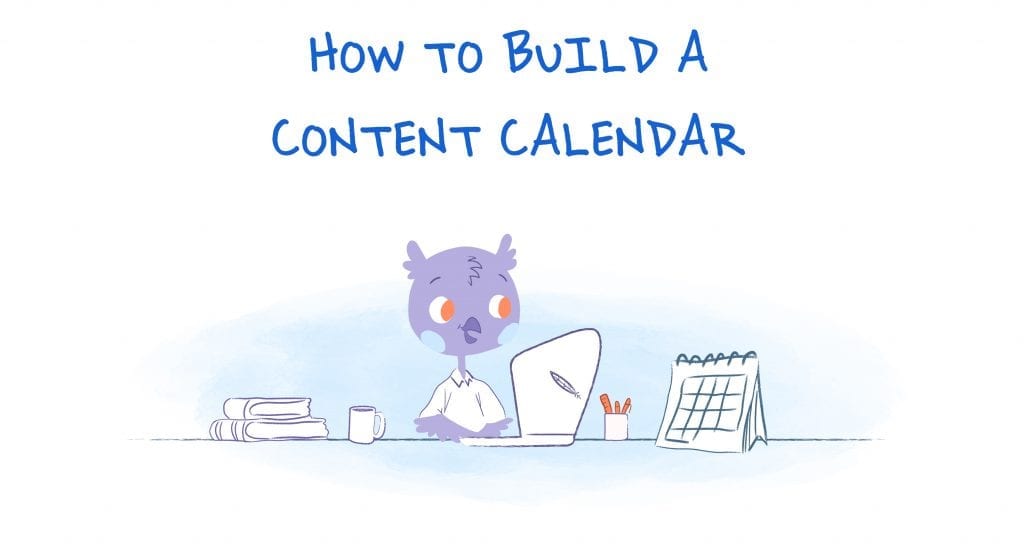

One of the biggest mistakes that I made when I first launched my blog was not taking the time to create a content calendar. At the time I didn’t see what all the hype was about, but I quickly noticed that I was scrambling daily to create and share awesome content. I was actually spending more time thinking of ideas then actually writing blog posts.
Create a content calendar.
Now that I have a content calendar, things are running much smoother. In fact, I’ve noticed that having a content calendar has also helped grow my business since I can focus on more important areas.
What is a content calendar and why do you need one?
A content calendar is simply a planner, spreadsheet, or calendar that details the content you’ll be publishing for weeks or months in advance. This not only gives you a quick overview of your content schedule, it can also be shared with your team so that they’re aware of deadlines and project details.
Creates balance and makes peace with personal anarchy.
By creating a content calendar you’ll be able to plan and maintain a consistent content production schedule, generate new ideas, and encourage team work. Additionally, a content calendar encourages accountability, use a variety of formats, and see which type of content resonates most with your target audience.
If you’re ready to capitalize on these benefits, you first need to create a stellar content calendar by taking these five-steps.
Step 1: Brainstorm content ideas.
The first step is to develop content ideas. These should be topics that fits your brands persona, addresses any questions or concerns your audience has, and that establish you as an expert in your industry.
Need some ideas? Here’s a some content ideas to get you started:
- How-to guides, videos, or webinars.
- Customer success stories.
- Case studies.
- Play off popular culture, news, holidays, or trends.
- Reading lists.
- Interview with a leader in your industry or business.
- Beyond-the-scenes of your business.
- Business-related infographics, statistics, press releases
- Weekly or monthly themes, such as Motivation Monday or 12 Days of Christmas.
If you have existing content, go back and see if you can repurpose it. For example, if you had written an instructional guide on how to use your product, you could turn that blog post into an infographic or video.
Ideally, you should develop enough ideas to schedule content for as far in advance as possible. I prefer to have enough ideas to last me for at least the next six months.
Step 2: Determine your publication channels and frequency.
After you’ve brainstormed content ideas, determine where you’re going to publish your content and how often. Remember, each channel will serve a different purpose. As such, each channel will suit your content differently.
- Blog. Publish “how-to” content, as well as insights regarding your business and industry. Ideally, you should publish a blog post daily. If this isn’t possible, focus on sharing 1 to 3 quality posts per week.
- Website. Landing pages, videos, and gated content can be used to make you more credible. It also helps improve your SEO. Once created, this type of content only needs to updated whenever your business or industry has changed.
- Video sharing sites. Explainer videos, interviews, and behind-the-scenes footage can be uploaded to channels like YouTube. Depending on your audience, you can publish videos or weekly.
- Social media networks. These channels are perfect for promoting new content, building brand awareness, and engaging with your audience. The frequency changes between channels as such; Facebook no more than twice a day, Twitter 3 times daily, LinkedIn once per day, Instagram 1.5 times daily, and Pinterest 5 times daily,
- Emails. This allows you to target specific audience segments with content like newsletters, press releases, surveys, and seasonal content. If you don’t want to annoy your audience, only send weekly or bi-weekly emails.
Step 3: Use a spreadsheet and calendar to map everything out.
They may sound outdated, but I’ve found that the spreadsheets are the best way to organize and plan your content schedule. However, if you use Google Drive you can then share and collaborate with your team easily.
While there’s no right or wrong way to create your spreadsheet, you probably want to include the following information in your columns:
- Publication date
- Author
- Title
- Content description
- Publication channels
- Marketing goals
- Keywords
- Status: draft, complete, or published
- Notes, links, and resource
Follow your map.
You may also want to use a calendar to map everything out. As Choncé Maddox explains, “I like to set up days dedicated to brainstorming, outlining, creating/scheduling, polishing, and promoting. Yes, the content production process is pretty tedious, but having a solid plan laid out in writing can make all the difference.”
You can also use your calendar to “set reminders to hold yourself accountable for meeting specific deadlines and allowing yourself enough time to prepare what you need to complete the content.”
Step 4: Define the workflow.
If you’re working with others, then make sure that you create and share with them a content strategy guide that includes:
- Overall marketing goals that the content will be used for.
- Editorial guide that outlines your brand’s tone, preferred language, and content formats.
- Brief guide on how the content calendar should be used and best practices.
- Tasks that each team member is responsible for.
- Who and how to contact if there are any questions or concerns..
Step 5: Schedule, publish, promote, track, and tweak your content.
“Regular editorial planning meetings between all those involved in content creation should be scheduled well before the next publishing period – be it monthly or quarterly,” writes Jamie Griffiths over at Convince and Convert.
During these meeting you can discuss when to “schedule the publishing content from your repository with realistic time frames and to support social media activity, email newsletter inclusions, etc.”
These meetings should also be “used to review the visit, engagement, and revenue (if available) stats from previous periods to assess which types of content are most successful (and perhaps need to be replicated) and which are less successful (and perhaps need to be rethought).”
Easier to watch your analytics.
Don’t forget to harness the power of analytics (both web and social) and revenue data. You can use this information to adjust “already published content e.g. titles, introductions, outbound links etc to optimize visits and engagement.”
Watch the competition.
I’d also add that you pay attention to trends and what your competitors are are doing. This way you can stay up-to-date on the latest stories, ideas, or strategies. The last thing you want to do is create and share outdated content.











Abby Miller
Student at UC Berkeley, currently working on a degree in Electrical Engineering/Computer Sciences and Business Administration. Experienced in CSX, productivity management, and chatbot implementation.